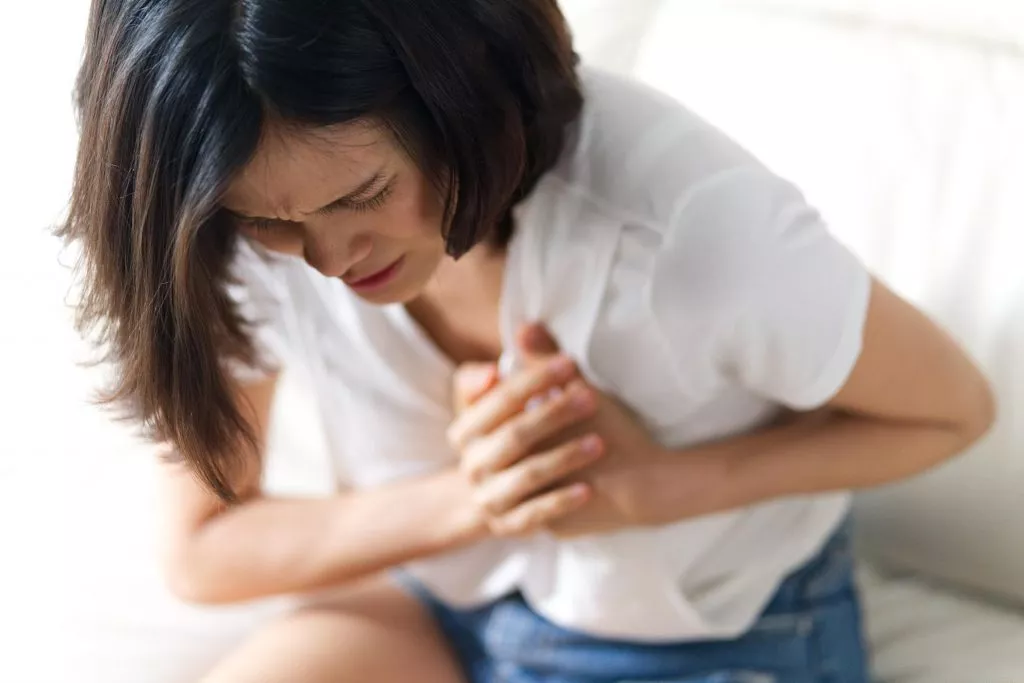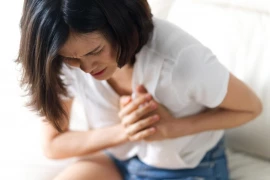
What is Sudden Cardiac Arrest?
- What is Sudden Cardiac Arrest?
- What are the symptoms of sudden cardiac arrest?
- When should I go to a doctor?
- What are the causes of sudden cardiac arrest?
- Heart conditions that can cause sudden cardiac arrest
- What are the risk factors?
- What are the complications?
- How is the diagnosis made?
- What is done in the emergency room?
Sudden cardiac arrest is the sudden cessation of breathing, heart function, and loss of consciousness. This condition is usually caused by a problem with the heart's electrical system, which causes the heart's pumping action to be impaired and stops blood flow to the body.
Sudden cardiac arrest is not a heart attack because only part of the heart stops blood flow. Also, a heart attack can reveal an electrical disturbance that can cause sudden cardiac arrest in some cases.
Sudden cardiac arrest can cause death if not treated promptly. Survival is possible with prompt and appropriate treatment.
What are the symptoms of sudden cardiac arrest?
The symptoms of sudden cardiac arrest are severe and include:
- There is no pulse
- Stops breathing
- Loss of consciousness occurs
Sometimes there are symptoms that precede cardiac arrest and may include:
- Chest ailments
- Shortness of breath
- Fast beating or beating heart
Most of the time, sudden cardiac arrest happens without any warning.
When should I go to a doctor?
Seek emergency medical attention if you experience any of the following symptoms:
- Chest pain or discomfort
- Heart palpitations
- Irregular heartbeats
- Unexplained sounds (wheezing)
- Experiencing shortness of breath
- Fainting or dizziness
When the heart stops, death or permanent brain damage can occur within minutes from low-oxygen blood. It is very important to help a person who is not breathing and is unconscious.
For someone who is unconscious and not breathing normally, do the following:
- Dial 112. To get emergency help, call 112 immediately and ask for help.
- Give heart massage. Quickly check if the person is breathing. If you notice that the person is not breathing normally, begin CPR. Massage the person's chest hard and fast 100-120 times per minute. If you have been trained in CPR, exhale into the person's mouth after every 30 massages.
If you have not been trained, continue to do breast massage. Allow the person's chest to rise between massages. Continue CPR until emergency workers arrive.
What are the causes of sudden cardiac arrest?
Sudden cardiac arrest is caused by the heart's electrical system not working properly, that is, an abnormal heart rhythm.
The heart's electrical system controls heart rate and rhythm. When something goes wrong, the heart can beat too fast, too slowly, or irregularly. Generally, irregular heartbeats are short and harmless, but some types can cause sudden cardiac arrest.
Heart conditions that can cause sudden cardiac arrest
Sudden cardiac arrest can also occur in people without a known heart disease. However, a life-threatening abnormal heart rhythm usually develops in a pre-existing and undiagnosed person.
- Coronary artery disease. Most cases of sudden cardiac arrest occur in individuals with coronary artery disease, that is, reduced blood flow to the heart as a result of clogged arteries with cholesterol or other deposits.
- Heart attack. It can trigger sudden cardiac arrest if a heart attack develops, usually as a result of severe coronary artery disease. A heart attack can create scar tissue in the heart. Scar tissue can cause abnormalities in heart rhythm.
- Enlarged heart. Cardiomyopathy primarily develops when the muscle walls of the heart become stretched, enlarged, or thickened. The heart muscle is abnormal, often leading to sudden cardiac arrest.
- Heart valve diseases. Leaking or narrowing of heart valves can cause the heart muscle to stretch or thicken. The chambers become enlarged or weakened by the stress caused by a tight or leaky valve, increasing the risk of sudden cardiac arrest.
- Congenital heart disease. When sudden cardiac arrest develops in children or adolescents, it can be caused by congenital heart disease. Adults who have had surgery for a congenital heart defect have an increased risk of sudden cardiac arrest.
- Electrical problems in the heart. In some people, the problem may be caused by the heart's electrical system rather than a problem with the heart muscle or its valves. These are primary heart rhythm abnormalities.
What are the risk factors?
Sudden cardiac arrest is usually associated with coronary artery disease, if you have a family history of coronary artery disease, you are at risk. In addition, the following factors increase the risk:
- To smoke
- High blood cholesterol
- Obesity
- Hypertension
- Diabetes
- Living still
Some factors that can increase the risk of sudden cardiac arrest include:
- Previous cardiac arrest or a family history of cardiac arrest
- Heart attack history
- Experiencing or having a family history of heart disease such as a heart rhythm disorder, congenital heart defect, heart failure, or cardiomyopathy
- Aging – risk increases with age
- Being a man
- Using drugs such as cocaine or amphetamines
- Nutritional imbalance with low potassium or magnesium
- Chronic kidney disease
- Obstructive sleep apnea
What are the complications?
When sudden cardiac arrest develops, blood flow to the brain is reduced and unconsciousness occurs. If the heart rhythm does not return to normal quickly, it can result in brain damage or death.
How can sudden cardiac arrest be prevented?
Regular checkups, screening for heart disease, and adopting a healthy lifestyle can reduce the risk of sudden cardiac arrest.
How is the diagnosis made?
For people recovering from sudden cardiac arrest, the doctor will try to find out what caused it to prevent future seizures. Tests the doctor may recommend may include:
Electrocardiogram
An EKG is taken to measure the electrical activity of the heart. These sensors are attached to the chest and sometimes to the arms or legs. EKG reveals heart rhythm disturbance.
Blood tests
The level of potassium, magnesium, hormones or other chemicals that affect the heart's ability to work should be checked, and a blood test is done for this. Blood tests can also detect recent heart damage and heart attack.
Imaging tests
These may include:
- Chest X-ray. This test checks the size and shape of the heart and blood vessels. It also allows to check whether there is heart failure or not.
- echocardiogram. An echocardiogram creates an image of the heart and uses sound waves for this. It helps to determine and check if an area of the heart has been damaged by a heart attack, as well as if it is pumping blood fast enough or if there is a problem with the heart valves.
- Nuclear scan. A small amount of radioactive material, such as thallium, is injected into the bloodstream. With special cameras, the radioactive material is examined as it flows through the heart and lungs.
Treatment
When sudden cardiac arrest is experienced, immediate intervention is required for the person's survival.
Heart massage
Cardiac massage is very important in the case of sudden cardiac arrest. CPR can ensure the patient's survival until emergency help arrives, in order to maintain blood flow to oxygenate vital organs in the body.
If you do not know how to perform CPR and someone with you loses consciousness, call 911. If the person is unable to breathe normally, press hard and quickly on the person's chest, allowing the chest to rise again 100-120 times per minute. Repeat this until emergency help arrives.
What is done in the emergency room?
When you go to the emergency room, medical staff work to stabilize the situation and treat a heart attack, heart failure, or electrolyte imbalances. Medications may be given to the patient to stabilize the heart rhythm.
Long-term treatment
After recovery, the doctor will discuss with the patient about preventive treatment to reduce the risk of recurrent cardiac arrest.
Treatment options may include:
- Medicines. The doctor may order the use of various medications to treat arrhythmias or possible complications of arrhythmias, either immediately or long-term. A class of drugs called beta-blockers are commonly used in patients at risk of cardiac arrest. Other possible drugs used to treat conditions that can cause arrhythmias may be angiotensin converting enzyme inhibitors or calcium channel blockers.
- ICD. After the condition is stable, the doctor may recommend a battery-operated ICD placed in the body near the left collarbone. The ICD monitors the heart rhythm. If it detects a slow rhythm, it speeds up the heart. If it detects a dangerous heart rhythm, it delivers low- or high-energy shocks to return the heart to its normal rhythm.
- Coronary angioplasty. This process is used to open blocked coronary arteries and allow blood to flow more freely to the heart. Thus, the risk of serious arrhythmia can be reduced. With a long and thin tube, it is usually entered through an artery in the leg and passed through the clogged artery in the heart. This tube is equipped with a balloon tip that inflates briefly so that it can open the occluded artery.
- Coronary bypass surgery. Bypass surgery involves opening blocked or narrowed coronary arteries and restoring blood flow to the heart. Thus, the blood flow to the heart can be improved.
- Radiofrequency catheter ablation. This action can only be used to cancel an abnormal electrical path. One or more catheters are passed through the blood vessels into the heart. They are positioned in electrical pathways determined by the doctor to cause arrhythmia.
- The electrodes on the catheter tips are heated with the help of radiofrequency energy. This destroys a small spot of heart tissue.
- Corrective heart surgery. In congenital heart problems, if there is a defective valve or diseased heart muscle tissue due to cardiomyopathy, surgery to correct the abnormality can increase the heart rate and blood flow and reduce the risk of fatal arrhythmias.
Life style
To live a heart-protecting lifestyle:
- Do not smoke.
- Reach and maintain ideal weight.
- If you drink alcohol, use it measurably. Men and women aged 65 and over should not drink more than one drink per day, and younger people no more than two drinks per day.
- Eat a heart-healthy diet.
- Be physically active.
- Avoid stress.
Medication
If you have heart disease or conditions that make you more vulnerable to heart disease, a doctor may recommend that you take medication for high cholesterol or take some steps to control diabetes.
If you have certain heart conditions that put you at risk of sudden cardiac arrest, your doctor may recommend anti-arrhythmic drugs.
If you are at a known risk of sudden cardiac arrest, a doctor may recommend a cardioverter defibrillator.
If you live with someone at risk of sudden cardiac arrest, it is important that you receive training in CPR. Getting an education allows you to help not only your loved ones, but also others.


